Suburbs and rural areas have long been thought of as the ultimate safe havens when civil unrest and disaster spread like wildfire in urban areas. There are tons of preppers with visions of grabbing their bug-out bag, wandering into the wild to find a perfect little farm or cabin to start their new life.
Unfortunately, recent events and shifting social dynamics have exposed vulnerabilities in these once-trusted havens. From supply chain dependencies to increased surveillance and migration out of urban areas, rural regions are no longer guaranteed sanctuaries. In this article, we’ll explore why the rural safety myth is breaking down, what new dangers are emerging, and how preppers can adapt their plans to account for these unsettling realities.
The Dangers of Suburbs and Rural Areas When Civil Unrest Spreads
Whether you’re thinking about bugging out to a rural area when civil unrest strikes, or you’re thinking about bugging in at your farmstead of family cabin, there are some challenges you need to be aware of.
Rural Areas Aren’t So Remote
Sprawling infrastructure, GPS, and mapping apps have made once-hidden backroads and remote properties easier to find. Urban dwellers fleeing civil unrest may look to rural areas for shelter, food, or perceived safety.

They bring their desperation with them to create a powder keg. What was once a secret location may now be a pin on someone’s digital map.
Limited Law Enforcement Presence
Law enforcement presence in suburbs and rural areas is limited to begin with. In times of widespread civil unrest, police and sheriff’s departments will be spread too thin or pulled into urban areas.
This leaves rural areas vulnerable to all manner of break-ins, theft, and violent crime, with no law enforcement presence to keep the problems from escalating. If you live on a farm or have a cabin in a rural area, you could very much be on your own to protect it when disaster strikes in the urbanized world.
This is compounded by the fact that most rural properties are massive. Whether it’s the farm you’re living on or the cabin you’ve been using for wilderness vacations, you’ll have a large, vulnerable perimeter to be concerned about.
Little Chance for Relief Efforts
Many rural areas rely on long-distance supply chains for things like fuel, medical supplies, and food staples. In a prolonged crisis, those deliveries may stop entirely, and the government will keep its focus on supplying relief efforts in urban and suburban areas.
So, while a rural community might be self-sufficient for the first few weeks or months of a prolonged crisis. When things do start to run out, there won’t be any immediate resupply.
Influx of Refugees from Cities
As dangers in urban areas increase there will be a mass migration of people trying to escape to rural area. These refugees will likely be unprepared, panicked, and potentially dangerous.
Rural areas with visible homes, livestock, or the perceived presence of resources will become magnets for unwanted attention. Squatting, looting, and hostile takeovers could become common. Especially if relief efforts in urban areas fail early on in a disaster.
The Dangers of Isolation
While privacy is usually an asset, in times of unrest, isolation can become a liability. Without neighbors, you may have no backup in an emergency.
All it takes is one broken leg, one medical issue, or mechanical failure to nosedive your survival chances. So, while you might be able to cut yourself off from other people, the double-edged sword cuts when there’s no one to help when you need it.
Drones, Satellite Maps & Surveillance
Government drones, internet satellite maps, and private surveillance tools are no longer just urban concerns. Thermal imaging drones and satellite tracking can locate heat signatures, crop growth, and movement in rural zones.
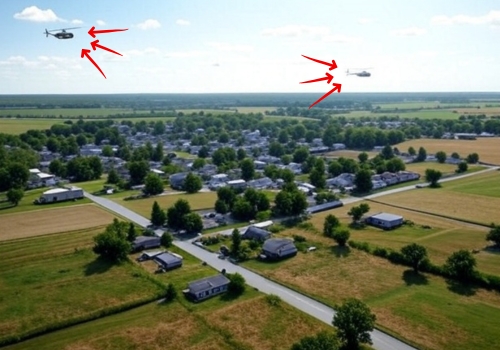
What used to be hidden is now easily observed by many outside sources. Especially if you have off-grid energy sources that emit detectable signals, or your access road isn’t obscured by overhead tree cover.
Weak Community Ties
Let’s say you get out of the city when civil unrest strikes and you make it to a cabin or an abandoned hobby farm. Now, you’re suddenly a newcomer to a rural area that’s rife with the notion of “Stranger-Danger.”
Even if you’ve been there a few times before, you may not have strong community bonds. In a crisis, locals often band together and may see an outsider like you as a threat or another mouth to feed when you don’t have the skills to take care of yourself.
Even if things with you and the locals remain peaceful, distrust can limit your access to mutual aid, information, and protection. In extreme cases, locals may preemptively defend themselves from perceived outsiders.
How Can You Overcome the Dangers?
There are a few things you can do proactively now to improve your chances when civil unrest strikes. With most, it helps to have a good idea of what rural destination you’ll be in.
Build Real Community Relationships
Trustworthy neighbors are solution multipliers in a crisis. Whether you already live in a rural area, vacation near one, or own a cabin/time share in a rural community, you need to make strong connections.
Get involved in local churches, visit farmers’ markets, and get involved in community projects now. A strong social network in your chosen rural area can provide support, barter opportunities, and safety in numbers. Even if you’re bugging out to your family cabin, make sure people in the closest town and general store know you and think of you fondly.
Camouflage Your Property
 If you have a farm, a vacation property in a rural area, or a house in the suburbs, do your best to keep a low visual profile. Avoid flashy solar arrays, visible stockpiles, or keeping animals close to a main road. Use natural landscaping, tree cover, outbuildings, and low-profile tactics to make your homestead appear unremarkable.
If you have a farm, a vacation property in a rural area, or a house in the suburbs, do your best to keep a low visual profile. Avoid flashy solar arrays, visible stockpiles, or keeping animals close to a main road. Use natural landscaping, tree cover, outbuildings, and low-profile tactics to make your homestead appear unremarkable.
I would also harden your main driveway. People fleeing urban areas will walk up your driveway out of instinct. Putting up a gate with a sign that says things like No Dumping, and a Biohazard sign might make unassuming people think your property is a remote medical waste dump to avoid.
When in doubt, a mature tree that’s easy to drop over your driveway will also slow down anyone attempting to access the property with a vehicle. Just make sure that you have an alternative way to escape.
Do It Like An Expert
With over a decade of experience as a Navy SEAL, Joel Lambert has operated in some of the most dangerous places on earth – securing perimeters, breaching enemy defenses, and staying alive in hostile territory. So when he talks about home defense, you’d better believe it’s worth listening.
According to Lambert, there are countless ways to keep intruders and looters off your property. He recommends a smart combo of DIY security measures that can turn your home into a real fortress:
- Multiple surveillance cameras
- Pressure plates
- Magnetic door contact sensors
- Razor wire
- Trenches
- Snares and traps
And that’s just scratching the surface. In A Navy SEAL’s Bug-In Guide, Joel Lambert dedicates an entire chapter to one critical subject: How to make your property looter-proof. The book is loaded with even more tools and tactics, plus Lambert’s top picks for the best guns for home defense – a must-read for anyone living in an area where law and order might break down fast.
Harden Your Perimeter
If you have a large rural property, invest in defensive landscaping, like hedges, bushes, closely planted trees, and even ditches full of wild raspberries. I once knew a family that allowed brambles to grow in their ditches and then ran barbed wire fencing behind it to effectively keep local teenagers from messing around in their backwoods.
I would also recommend multiple layers of perimeter defense. A well-placed ditch, an extra fence, and a strong gate are all relatively inexpensive to install. You can then add things like security cameras, motion sensors, and nighttime lighting to outbuildings.
Diversify Resources
Don’t rely solely on one well, one generator, or one food source. Make sure that every resource has a redundant alternative. Then stockpile barter items like fuel, medicine, and hygiene products.
This ensures that you have what you need to survive when relief efforts don’t come. It also gives you resources that you can barter to get other things you need, without hurting your survival chances.
Here are a few solid recommendations I can give you:
- Water – If you’re living in the suburbs, don’t give up your well or your municipal water connection just yet. But you need a backup plan. One excellent option is this backpack-sized water generator I recently discovered – used by the Israeli military to keep their troops hydrated. I like it because it’s practical, affordable, and insanely effective. It pulls 50 gallons of water per day straight from thin air.
 Food – Learn how communities like the Amish store their food long-term, manage supplies, and prepare meals that last for months—sometimes years. If you don’t already have a proper storage solution, consider building an easy cellar. It’s cheap, straightforward, and gives you a cool, hidden place to store supplies.
Food – Learn how communities like the Amish store their food long-term, manage supplies, and prepare meals that last for months—sometimes years. If you don’t already have a proper storage solution, consider building an easy cellar. It’s cheap, straightforward, and gives you a cool, hidden place to store supplies.- Medicine & Treatments – After an SHTF event, pharmacies and hospitals will likely be down for good. Stockpile antibiotics and essential meds now – many of them can be obtained without a prescription if you know what to do.
Form or Join a Mutual Assistance Group
Collaborate with other preppers in your area to share defense responsibilities, labor, and intel. A MAG creates a force multiplier, with each member bringing unique skills and resources. If you’re already putting in your due diligence by engaging with the local community, it shouldn’t be too hard to find like-minded individuals.
Be Prepared to Bug-Out
No matter how prepared you are, how strong your community ties are, or how thoroughly you camouflage your property, a situation can still escalate beyond your control. In a scenario like this, you need to have a bug-out bag, a backup stash, and a safe place to flee to. You can then assess what to do from a place of reason, rather than desperation.
If you’re planning to bug out but don’t have a secure location to fall back to, you might end up surviving in the wilderness. And let’s be honest – that’s next-level survival.
You’ll need nerves of steel, a sharp mind, and solid wilderness survival skills to make it out there.
That’s why I recommend everyone have a forest survival strategy as a backup plan. You don’t need to be an expert, but you do need to know how to shelter, find water, secure food, and stay hidden if things go south. Even if you plan to bug in, prepping for bug-out wilderness survival is smart insurance.
Final Thoughts
The idea that non-urban life guarantees safety when civil unrest strikes is no longer realistic. The modern world has changed and so have the threats. From surveillance to resource scarcity, the dangers are real and growing. Yet with smart planning, strong community ties, and adaptive strategies, you improve your chances of thriving when SHTF.
If you’re looking for something quick and effortless to keep looters at bay, there’s also the option of a ready-to-go anti-looter kit that takes a lot of the guesswork out of the equation. Bottom line: you’ve got options.
You may also like:
Civil Unrest Myths You Need to Stop Believing
Where to Find Free Land in the US… (Video)
Urbanites Moving To Rural Paradise Ruining It For The Locals

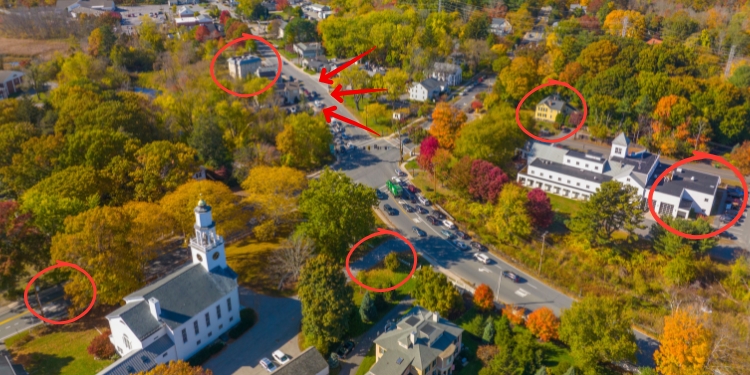
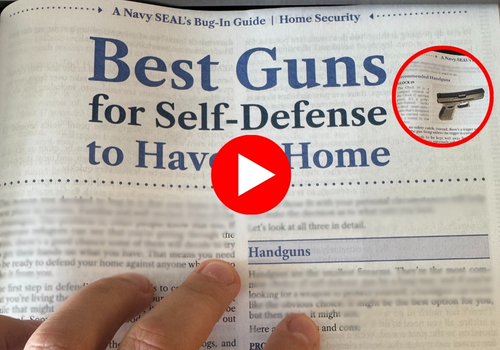







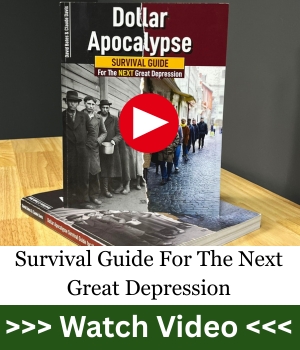
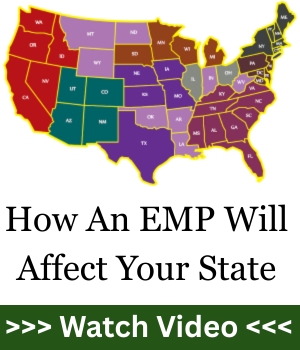
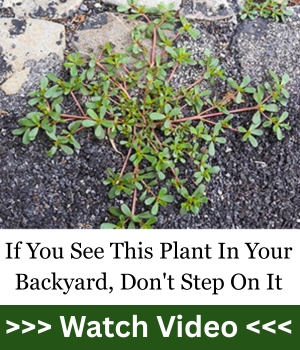
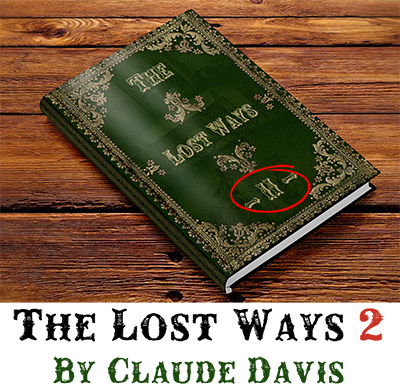
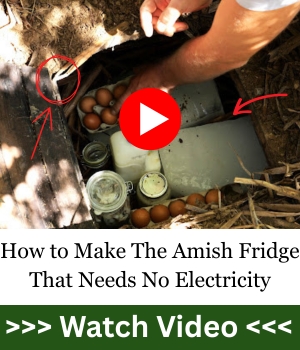
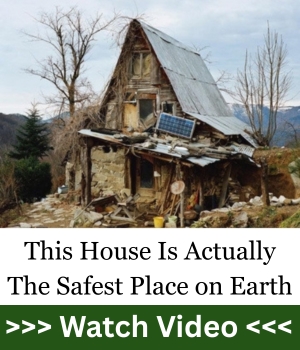
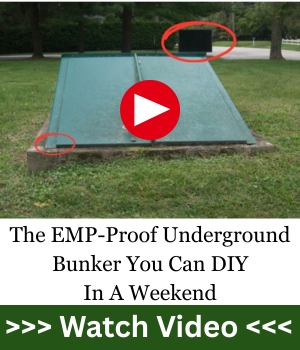






excellant article
where ever there is wealth there will be villians, crime familys and gang mobsters
this is always true, where you should put your Trust, Hope, Faith
not in your stuff, house, bank, assets, or things that perish
The Way, The Truth , The Life John 14:6
A way that seems right to all , socially , and aceptable
But the way is Eternal Death , Not just physical
Be Smart, Be aware, Trust NO one , and put your faith in Jesus Christ who Gave all for All who will believe, Trust, Follow His Word
Seek , you will find, Look and you will see , Do the Due Diligence of research
so your not DECIEVED
Deception is rampant in the world
Rev. is very clear Punishment to all who Make themselves thier own god, Reject truth, and do it thier way .
The Real Sin Is Rebellion against God
Just keep in mind. most members of the refugee mob breaking down your door are also Christians, but they’re there to steal your food, not to sing Kumbaya.
Why do you say that?
Um, no. They might be “Christians”, but they certainly aren’t Christians. That’s quite possibly the most misapplied term in history.
Christopher I think you missed the intention of the article. My biggest take aways are
1. No matter where you are get to know your neighbors. (More than a head non across the fence)
2. Bad people will always do what bad people do.
3. A tight neighborhood/subdivision is your strongest defense.
No one should be expected to know everything but as a community you’ll know enough. Jack of all trades Master of one.
Always put “Contribution” before “Distribution”!
Strength in Numbers. Your neighborhood will be a security zone. If you live in a housing tract, you’ll need to set up one Entry Control Point (ECP) to control access and shut down all other entry points unless you have the manpower for multiple ECPs.
The ECPs will have an authorized list of guests to be sponsored by a resident. The resident is responsible for their guests. There should be a secondary inspection area to search for contraband. There should be a medical screening area for infectious diseases. Once the inspections are completed, the guests are escorted to a safety briefing tent where they get the Do’s and Don’ts. They are interviewed for intel and skills. Skills will determine assignment for the community. No free rides.
Where I live.
They already steel from each other and me as well.
This village is known for low life people.
They would steel your eye teeth.
You have to be in there little click.
ALL READY had two families move out of here.
If your not in there crooked click.
You do not stick.
They like to find out every thing a bout you.
And go threw tour house when you leave for the day.
And most of the people that run this village makes
it there business to go threw your home.
Or they have people do it for them that are part of there clan.
Lock your door and load your guns.
Dang, where do you live (state/city)?
Can you get out of there?
We are sorry to hear that. It would be important to move out, if possible, of course.
Bad neighborhoods are another thing. Maybe you’ve got one up on the rest of us, since I expect many neighborhoods will become bad or worse in SHTF.
Hoping it won’t happen guarantees we’ll drown in it if it does. Meaning: prepare.
There are different successful habits in bull vs. bear markets – think about that in respect to neighborhoods.
Gray man (and yes, gray woman) behavior, not standing out, hidden caches/preps, appearing undesirable, now way more important.
Lots of good in the article. If you think your going to drive to a farm and knock on the door, “hi were from the city” YOUR AN IDIOT. if you open your door for them, YOUR AN IDIOT
If your in the city, and you bug out, it better be to YOUR LAND ( Good PLAN) or PUBLIC land (GOOD LUCK ! )
Christians knocking down your door, are no longer Christians !
Christians KNOCK on your door, and so do people that plan to kill you for your food shelter water and your woman. So, THINK ahead for her sake.
Community ties, then you better spend time in that community.
Multiple sources for everything, YES, you better plan that for the long run.
INJURY, power is out for 4 days, be ready. SHTF and the entire grid is down, expect that to stay that way INDEFINETLY, you cant store enough gas forever. Not going to be a hospital, no Dr ! better think ahead and NEVER take a chance if you can avoid it ! Remember survivor shows, clearly winning and then, 1 little slip .
form mutual assistance group, where was I when we got advised to tell everyone about our supply’s. Or does that warning still hold true ? you FRIENDS are friends, but the strangers you meet when you join or form a group, are still strangers.
Jesus was willing to DIE for all of US, are you ?
being a good Christian has a lot more chances to bite your head off after SHTF, most Christians will gladly send you to Jesus . . . instead of taking the trip themselves. never forget that
If strangers are genuine Christians, you don’t have anything to fear from them.
If strangers are pretend Christians, then they are of the world, and will be worldly.
Many fall into the latter category. Most non-Christians can, however, tell you ALL about how Christians are supposed to behave.
You have to know people for a while to figure out if they’re real or not. I’ve known plenty who could talk the talk but wouldn’t walk the walk.
The proof is in the pudding, and SHTF will peel the thin veneer off of people. It will become quickly apparent who the real vs fake ones are.
What does a made up character have to do with keeping your stuff safe in a disaster.
Made up? There isn’t a question about whether or not Jesus existed as a person – among any intelligent historian. You could claim that George Washington or Jimi Hendrix didn’t exist, and that claim would be just as false.
As for “keeping your stuff safe in a disaster”… Death is coming for all of us. That’s the disaster. The most valuable “stuff” I or you have is a soul. Jesus paid the price for all of us to go to heaven i.e. “be safe”, and he is the only one who could do so per the Bible.
Why the Bible instead of the Koran, I-Ching, Bhagavad Gita, Book of Mormon, or anything else? The Bible has 350+ prophecies in the Old Testament regarding Jesus. Most of those have come true – the rest concern his return, final judgement, etcetera, and those can be fulfilled very soon, or a while from now. No other so-called holy book has fulfilled prophecy as the Bible does. None.
I hope that answers your question.
I used to be surrounded by 1000 acres of trees and the way in was under a canopy of trees. People moved in the back and bulldozed 100s of acres to raise cattle. They also cut back trees on my land while I was gone. Now the entire road is visible from the top of the mountain. I also have solar panels that you can’t see from the road. Now the big problem: I am the first house that anyone sees when they come down the road. The nearest neighbor is 1/2 mile away. The tree cutters are over a mile away. Any suggestions on how I can do anything that would help? Right now my last resort is the huge box of fireworks that are in the middle of my preps and the flare gun. If I can’t have it then nobody else gets it either.
That’s a rough situation, and you have every right to be concerned. Losing your natural canopy not only strips away your privacy, but makes you the first visual target for anyone coming down that road — a nightmare scenario in a grid-down or civil unrest situation. The fact that others cleared land without respecting your boundaries only adds insult to injury. Visibility equals vulnerability, and you’ve gone from hidden gem to potential hotspot through no fault of your own.
Short-term, I’d look into passive concealment: fast-growing trees or shrubs like green giant arborvitae, willow hybrids, or even wild rose can help rebuild a screen. In the meantime, camouflage techniques — neutral tones on structures, natural clutter, and visual breaks — can reduce your home’s profile. Adding game cameras (real or dummy), no-trespassing signage, or even some “abandoned” decoy elements can make people think twice. Distance is still your ally — use it to mislead, distract, or reroute attention from your actual home.
As for the fireworks and flare gun — I get the thinking. That kind of fallback tells me you’re not just prepping gear, you’re mentally prepared to make hard calls. But instead of seeing them as a last resort to destroy, consider them tactical tools — attention-grabbers, diversions, or signal flares in a worst-case scenario. Your home’s worth protecting, and there are ways to do it without giving up. With some stealth planning and long-term growth, you can reclaim the advantage you had. Stay sharp out there.
Thank you so much for the additional data that could help me. However, I am older and Breast Cancer has wiped me out. there is no way I can bug out. I will try to implement your suggestions and bring back my security and serenity. Please keep up the good work. This sight has improved by leaps and bounds. Again, thank you:)
When I see these articles, I’m glad to be back in my “forest house.” The best decision was to leave the city! My neighbors raise cattle and have a garden. The peace of mind far outweighs the worries. My advice: take your advice, don’t look back, and leave while you can move freely!